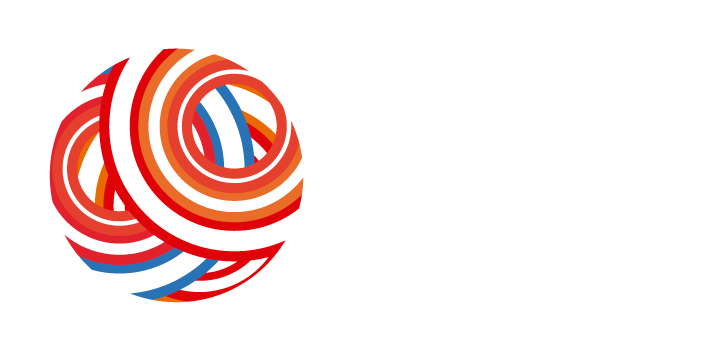The Archaeological Complex of Toro Muerto is a petroglyph site created by agroalfareras (agricultural-ceramic) societies in which their worldview symbols and daily life scenes were portrayed in thousands of engraved rocks of volcanic origin. It represents a remarkable example of particular tradition of rock art. Throughout a large range of evidences, it is possible to confirm that between 800 – 1500 years A.D. many anthropomorphic, zoomorphic, geometric figures and many scenes were engraved, identifying in the stone block panels of the site. They were located at a large desert plain that is in the Majes valley.
In the group of petroglyph localities around the world that hold an ancient and even a significant density of engraved rocks, Toro Muerto has an exceptional place for its cultural attributes and values that are masterfully expressed, and it stands out not only in Peru or in America.
The Archaeological Complex of Toro Muerto is located in the region of Arequipa, at 163 km from the city of Arequipa and next to the village of La Candelaria. It belongs politically to the Uraca and Aplao districts, province of Castilla. It is located western Andes Mountains, Toro Muerto is located in a wide and desert gorge that joins the Valley of Majes River, whose landscape is distinguished by its dry lateral gorges, fluvial terrace in both shores and river course (Fig. 1). In detail, the petroglyph site is located in the north shore of that valley; moreover, it is delimited to the east and west by high and large cliffs, almost verticals, that are composed by volcanic rocks.
As many other coastal valleys of Peru, the Majes valley is formed as an ‘oasis’ in the desert, which serves as a natural route for Pre-Hispanic communities that moved from the highland to the coast, and vice versa, looking for subsistence products and goods to exchange.
In this area, the Toro Muerto gorge has a large alluvial fan of 11 km of longitude and 5 km maximum wide in its joint with the valley. It has an inclined plan that domains it, whose altitude varies between 1900 meters in its highest point and 400 meters in
its lowest point. It has an arid and dry environment; however, it has a spring of underground water that emerges in the southwestern sector of the site, called spring La Aguada. This water source is a relevant element in the local landscape and, above all, a resource of singular importance in the zone since it is the only place of permanent humidity in the plain that allows few vegetation as an oasis. That played a crucial role for the ancient Pre-Hispanic populations that used this space and walked through it.
In that regard, the archaeological complex is inserted in a desert landscape distinguished by more than five thousand blocks of igneous rock of volcanic nature, located on the land belonging to the “Moquegua” formation of the Tertiary Period. (Fig. 2) The origin of these rocks goes back to the geological period known as Pliocene. During this period, it is possible that the violent pyroclastic emanations of the Coropuna and Chachani volcanoes, located in the upper part of the Majes valley has generated blocks of dacite tuff (Bedia 2012, 22; Linares 1974, 141). Subsequently, due to weathering and inclement weather, they fragmented and spread over the sandy surface of the gorge. Large blocks of dacite are particularly concentrated in the upper part of the stream and decrease in quantity and size towards the lower part (Fig. 3).
In addition to the Toro Muerto site, other archaeological sites in the Majes valley confirm the continued human occupation of this region (10000 years), identified from the Lithic Period to the Inca and Colonial periods; which suggests that it was inhabited and traveled for centuries. Evidence of this prolonged use of the territory are the petroglyphs of Watapia, La Culata de Aplao, La Barranca, located upstream, as well as Alto de Pitis and Querullpa, closer to Toro Muerto. Moreover, towns, cemeteries, geoglyph fields, among others, such as Beringa, Casquina, Cosos, Cerro Bilbao, Huancarqui, Cerro del Gentil, Acoy, Quizcay, Huario, Santa Rosa, El Carmen and La Real; correspond to the Early Intermediate Period (100 B.C. – 900 A.D.), Middle Horizon (600 A.D. – 900 A.D.), Late Intermediate Period (1100 – 1430 A.D.) and Inca (1438-1532 A.D.) (López y Maquera 2016, 111).
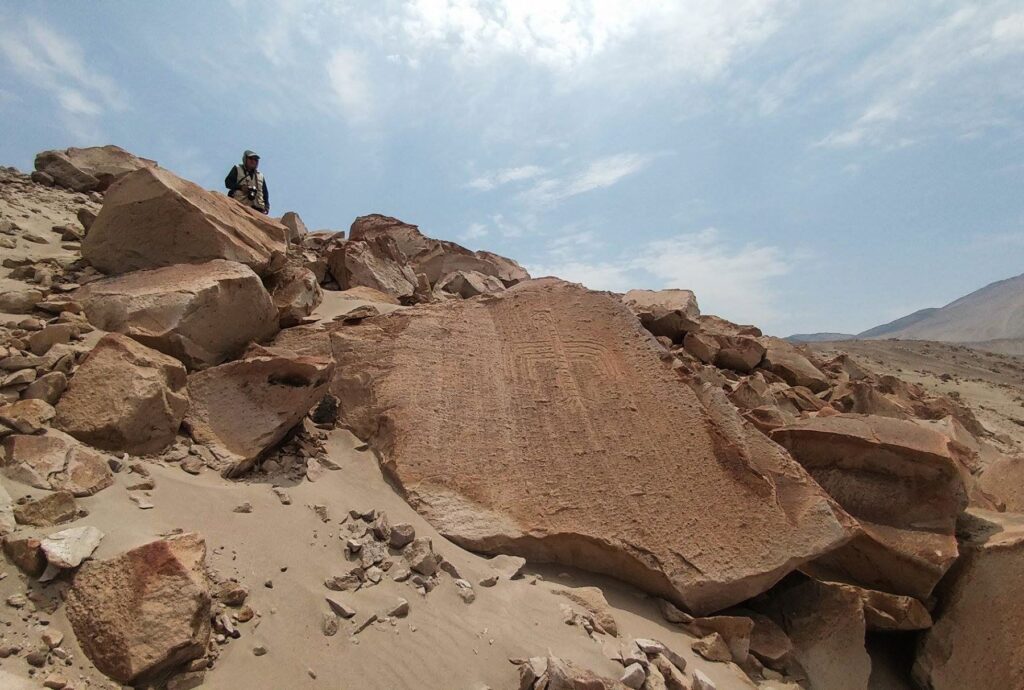
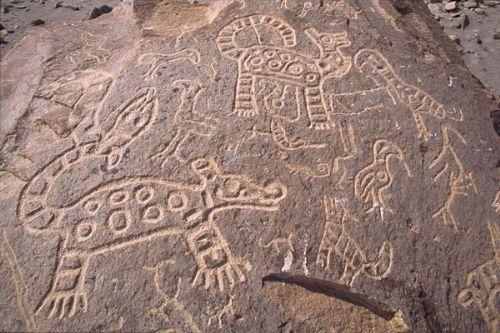
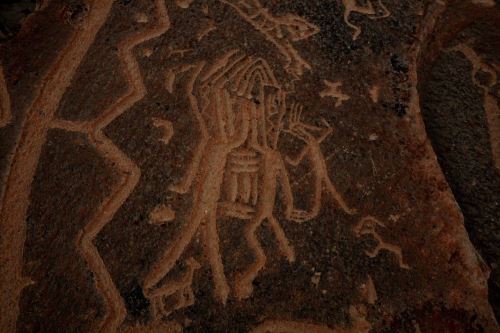
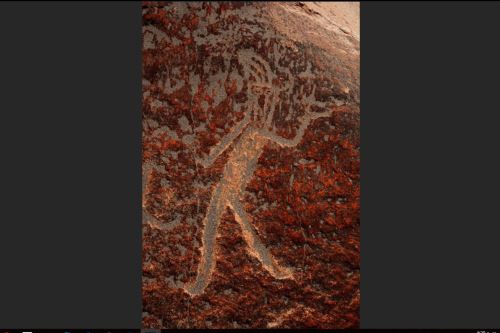
Indeed, there is a diversity of human figures represented in the site, which have an unmistakable style, since they have faces with a single dot on it, with two eyes or with three long descending lines. In addition, other figures only show a cross with curves on the sides in the face, or between the body and the headdress, two eyes are without further facial representation. In some dancing figures, the face is formed by its external part and, in the center, a circle with a vertical line that sometimes is straight and sometimes curved, while in others, the face is full size.
For example, the dancers are with moving catfishes or with many quadrupeds, and sometimes together with falcons and felines, also dancing alone, in pairs or in groups of 3 or 4, and so on until forming large groups. In a particular case, there are two dancers in vertical position and next to them, two in horizontal position, and all with a great dance movement (Ibid. 338) (Fig. 7).
Other topic that is distinguished are the zoomorphic figures whose mouth emanate consecutive lines or lines and dots like effluvium. Sometimes an animal’s “effluvium” goes directly to the sex of the animal in front of it. Occasionally, that figures are seen between the dancers and the “musical signs”. In others, the symbol of the “effluvium” emanates from three animals simultaneously, and in general, from quadrupeds and birds (Núñez 1986, 338).
The most part of the Toro Muerto petroglyphs were engraved deeply due to the softness of the dacite rock of vacuolar matrix, with mica and sanidine crystals, and of colors that goes from dark coffee almost black to light sepia and creamy white due to the rusting caused by the rain and weather. They were engraved with axes made of hard sharpening stones and andesites, in shape of wedges and hammers. A large number of juxtaposed figures of different sizes often covered the vertical or slightly oblique rock surfaces. The engraving processes included the striking, blending, scratching, chipping and percussion engraving of these stone materials. The execution of some details of the figures such as hands, eyes and small animals, were made with enough care and figured by fine incisions (Linares 1974, 142). The grooves of the engravings appear in angular form as deep channels; shallow, superficially struck and scratched, thus revealing the different techniques employed (Núñez 1986, 337).
The most remarkable feature of these rock art expressions are the stereotyped elements associated in comparable scenes. The basic motifs present in part or in whole correspond to: vertical or sometimes horizontal bars, zigzag lines and parallel lines, anthropomorphic dancers and small mammals (dogs, felines and/or llamas) (Guffroy 2009, 222).
The frequency of these motifs does not exclude a certain diversity in the other engraved figures, particularly in the lower part of the site, which seems to correspond to an early period of occupation of the site. The anthropomorphic beings engraved in this sector represent individuals playing drums, characters with headdresses and human silhouettes. Signs are scarce in this area, also targeted by stones with a single petroglyph of small size (Op. cit. 223).
The masked dancers’ figures that prevailed in the middle and upper part of the site incredibly demonstrated a revealing ideological evolution, related to the emergence of a true unique symbolic graphic in the Peruvian rock art. The quantity of petroglyphs engraved on a single stone – which can reach 150 figures – and the apparently unfinished state of some panels suggest a progressive process of execution organized according to certain stylistic conventions (Ibid.), which have not yet been fully defined.
The dancing characters have a certain diversity in the position of the legs – straight or folded serpentine- as well as in the appearance of the faces/masks, which can be with one or two eyes and tears figures; with lines or without facial features. Almost all of them have hairs or feather headdresses. The relationships between the rectangular shape of the bodies and their hips to one-side position with the bars and zigzags that surround them are evident, giving the scenes a sensation of great movement (Ibid.).
The animals related to that dance scenes are mostly dogs or small felines, less frequently a profile view of llamas and birds of prey, belonging to the fauna of the region (Linares 1974, 138). Many are in the same scale that men, but sometimes are oversized. There is a large diversity of animal figures inside the panels where the group of bar/zigzag/dancer are absent or peripheral. Felines with spotted or scratched bodies are represented mostly in scenes of confrontation or one running behind other, with a profile view of the head or a frontal view, and sometimes with effluviums (Guffroy 2009, 223).
Many birds’ species are in a profile or frontal view with wings outstretched, usually with a falling tear of one eye. There are great representations of snakes and beings with snake shapes, mostly with one head, as lizard, batrachians and fishes.
The camelid figures with rectangular bodies, alone or in flocks; deer, and other animal species of large size, difficult to recognized are also quite numerous.
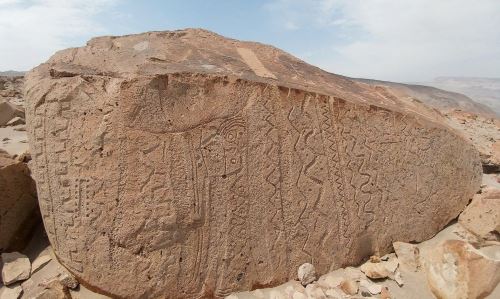
The Archaeological Complex of Toro Muerto is a remarkable example of a petroglyph site created by agroalfareras (agricultural-ceramic) societies in which their worldview symbols and daily life scenes were portrayed in thousands of engraved rocks of volcanic origin in America. Its location is a large desert plain of Tertiary Period; as 2584 engraved rocks that were identified so far in an area of 5078 hectares. That make the site an extraordinary petroglyph locality in the world, and above all, in the American continent.
Toro Muerto is an outstanding expression of a rock art tradition in the Andean region and in America. It is possible to find evidence that show the artistic mastery in the application of many engraving techniques in volcanic rocks, the selection of a large iconographic corpus of a high symbolic importance and the figure and unique scenes composition, that reflect culture heritage and the specialist work on their own time and space. The rock art, as a universal artistic creation, was practiced by ancient human groups and civilizations to express important aspects of their economic and social activities; believes and religious practices. The petroglyphs of the Archaeological Complex of Toro Muerto have a particular sample of this ancient cultural and artistic testimony.
The site represents a particular example of cultural transformation of natural landscape for the amount of thousands of petroglyphs, small groups of geoglyphs, graveyards, tombs and ancient related roads, all located in a large desert plain of sandy surface, sprinkled with volcanic rocks, that prevail in the valley and has a unique groundwater source. These natural and cultural elements as a whole give the place not only functional but also relevant symbolic connotations. In the Andes, there is a longstanding relationship between man, nature and the cosmos. Both in the Andean world and in other ancient civilizations, the actions of individuals were conditioned and structured from a particular way of seeing and understanding the world. Toro Muerto reveals a lot about the way people perceived, understood reality and expressed themselves, as well as the way they related to these kinds of spaces.
As many other ancient civilizations, people represented their worldview through rock art in the Andean world. The Toro Muerto petroglyphs expressed masterfully a particular tradition characterized by the recurrence of anthropomorphic, zoomorphic and basic geometric motifs of symbolic nature. They were organized in figures and scenes that reflected continuation, changes, mutilation and superposition of motifs in time. Therefore, the Archaeological Complex of Toro Muerto is an exceptional testimony to a cultural tradition which has disappeared in the “Archaeological Heritage – Rock Art Sites” category (see Comparative Analysis).
Criterion (iii): The ancient Andean societies expressed through rock art their way to see and understand the world and the landscape. The Archaeological Complex of Toro Muerto reveals the material expression of a remarkable particular tradition of rock art, expressed in figures and scenes about daily life of high symbolic significance. They were engraved in thousands of volcanic rocks, and social transformation of the natural landscape. Consequently, the Toro Muerto petroglyphs have an exceptional testimony to a cultural tradition, which has disappeared.
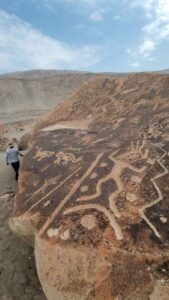
Rock art exists in most countries around the world, so it represents a universal creation of man and one of the first expressions of human capacity for the abstraction, overview and idealization. This art reveals not only important aspects of economic and social activities, believes and religious practices, the mythical thought and nature, but also the aesthetic sense, and artistic and cultural creation of ancient societies that produced them.
In the American continent, especially in Peru, there is an important sample of rock art in its four methods such as pictographs, petroglyphs, geoglyphs and mobiliar art with rock art tradition, that represent around 8000 years of ideological and social evolutions. The most updated national inventory made to date indicates the record of about 900 sites identified in the many regions of the country, which 400 belong to localities of petroglyphs recognized in 22 of their 24 regions. Arequipa is in the top of the list with 88, the biggest amount of this type of sites, then Puno with 75 and Huánuco with 67 (Hostnig 2003, 10, 17).
Toro Muerto is compared to important petroglyph localities in Peru such as Alto de Las Guitarras, Cerro Mulato, Yonan, Huancor y Checta, by superposition signs, iconographic changes, figure mutilations or appearance of many patinas that indicate the possible existence of various performance moments, as a reflect of certain ideological evolutions. Moreover, it is compared to Palamenco and Samanga because they are located in plains and engraved rocks are distributed in heavy or widespread concentrations. The location in a dominant position over the valley makes it similar to other sites as Checta, Chichictara and Huancor. The appearance of small geoglyphs and tombs related to petroglyphs allows comparing also to Locumba, Quilcapampa and Miculla sites. Likewise, the representation of common elements as felines, birds and musicians, with sites as Chichictara and Quilcapampa.
However, it is distinguished from sites mentioned above, and stands out from them because sites with more than 50 engraved rocks in Peru are rare; barely 12 sites exceed this number. In that regard, the Archaeological Complex of Toro Muerto has a remarkable petroglyphic locality of 2584 engraved rocks inventoried to date, and distributed in an area of 5078 hectares; that show the greater variety of engraving techniques and superior abilities in its production. Likewise, it is also different from that by complexity and peculiarity of scenes represented in a support of particular features. In addition, the landscape, where the appearance of important natural and cultural components as a freshwater spring, geoglyphs, graves and cemeteries stand out. Therefore, it represents the most remarkable exemplar of a large tradition of rock art in Peru and the Andean region.
On the other hand, the Archaeological Complex of Toro Muerto is located in an outdoor plain and in an arid and desert environment, next to a valley, common in the Peruvian coast. In contrast to other petroglyph sites in America, inscribed on the Tentative List of World Heritage such as Las Labradas (Mexico), Itacoatiaras of Ingá River (Brazil) and the Pre-Hispanic rock art of the Dominican Republic.
Thereon, Las Labradas is a group of 600 basalt rocks of volcanic nature, located in the seashore, while Itacoatiaras of Ingá River is a rocky panel of 24 meters long and 3.5 m tall approximately, that are part of a granitic rocky outcrop, located in an area near Ingá River, in a semiarid and wooded environment. Finally, Pre-Hispanic rock art of the Dominican Republic represented in paintings, petroglyphs and low relieves, has been identified in outdoor stations, shelters and caves, scattered in the coastal plains, large valleys and mountains of the country.
The antiquity of Las Labradas sites (1000 B.C. – 300 A.D.) and Itacoatiaras (10 000 B.C. – 1400 A.D) are earlier than Toro Muerto; however, the human occupancies of the main site of Itacoatiaras of Ingá River present a chronology that is extended until the 14th century A.D., contemporary with the development of the Toro Muerto petroglyphic locality.
Moreover, the Archaeological Complex of Toro Muerto is compared to the following sites registered in the World Heritage List:
In contrast to the mentioned sites, the Archaeological Complex of Toro Muerto express its global importance by the following:
Therefore, and upon the previous comparative analysis of petroglyph sites, both national and international, Toro Muerto is a site with a group of remarkable cultural attributes and values in the world, that makes it exceptional.
Article taken from: Archaeological Complex of Toro Muerto – UNESCO World Heritage Centre
Photographs taken from : Andina.pe

